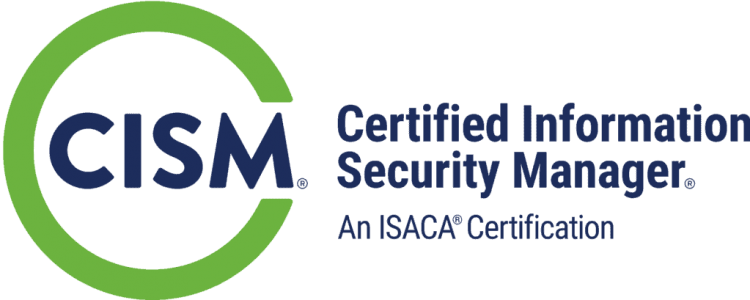Course Overview:
TechNow’s CCSP Certification Preparation Seminar is an accelerated course designed to meet the high demands of the information security industry by preparing students for the industry standard Certified Cloud Security Professional exam. The exam covers (ISC)²’s 6 Domains from the Common Body of Knowledge, which encompass the whole of cloud security.
This course is an intense 5 day program. TechNow has a proven training and certification track record that you can depend on. CCSP test is 125 questions that typically require more comprehension than CISSP questions. The instructor takes time to walk through scenarios that assume comprehensive knowledge of enterprise infrastructures.
Attendees to CL-315: CCSP Certification Preparation Seminar will receive TechNow approved course materials and expert instruction.
The 6 domains of the CCSP CBK:
- Architectural Concepts & Design Requirements
- Cloud Data Security
- Cloud Platform & Infrastructure Security
- Cloud Application Security
- Operations
- Legal & Compliance
Duration: 5 days
Audience: Mid-level to advanced professionals involved with IT architecture, web and cloud security engineering, information security, governance, risk and compliance, and even IT auditing. CCSPs will be responsible for cloud security architecture, design, operations, and/or service orchestration.
DoD 8140: Not Mandated
Course Prerequisites: IT professional with 5 years of experience, 3 years of security experience, and at least 1 year of cloud security experience. GSEC, CISSP, CASP or equivalent experience in managing enterprise infrastructures. CCSP test is 125 questions that typically require more comprehension than CISSP questions. This course is for those who are already qualified at the enterprise level for IT infrastructures, have Cloud experience, and are looking for a Cloud Security certification.
Course Objectives:
Domain 1: Architectural Concepts and Design Requirements
- Module 1: Understand cloud computing concepts
- Module 2: Describe cloud reference architecture
- Module 3: Understand security concepts relevant to cloud computing
- Module 4: Understand design principles of secure cloud computing
- Module 5: Identify trusted cloud services
Domain 2: Cloud Data Security
- Module 1: Understand Cloud Data Life Cycle
- Module 2: Design and Implement Cloud Data Storage Architectures
- Module 3: Understand and implement Data Discovery and Classification Technologies
- Module 4: Design and Implement Relevant Jurisdictional Data Protection for Personally Identifiable Information (PII)
- Module 5: Design and implement Data Rights Management
- Module 6: Plan and Implement Data Retention, Deletion, and Archival policies
- Module 7: Design and Implement Auditability, Traceability, and Accountability of Data Events
Domain 3: Cloud Platform Infrastructure Security
- Module 1: Comprehend Cloud Infrastructure Comp
- Module 2: Analyze Risks Associated to Cloud Infrastructure
- Module 3: Design and Plan Security Controls
- Module 4: Plans Disaster Recovery & Business Continuity Management
Domain 4: Cloud Application Security
- Module 1: Recognize Need for Training and Awareness in Application Security
- Module 2: Understand Cloud Software Assurance and Validation
- Module 3: Use Verified Secure Software
- Module 4: Comprehend the Software Development Life Cycle (SDLC) Process
- Module 5: Apply the Secure Software Development Life Cycle
- Module 6: Comprehend the Specifics of Cloud Application Architecture
- Module 7: Design Appropriate Identity and Access Management (IAM) Solutions
Domain 5: Operations
- Module 1: Support the Planning Process for the Data Center Design
- Module 2: Implement and Build Physical Infrastructure for Cloud Environment
- Module 3: Run Physical Infrastructure for Cloud Environment
- Module 4: Manage Physical Infrastructure for Cloud Environment
- Module 5: Build Logical Infrastructure for Cloud Environment
- Module 6: Run Logical Infrastructure for Cloud Environment
- Module 7: Manage Logical Infrastructure for Cloud Environment
- Module 8: Ensure Compliance with Regulations and Controls
- Module 9: Conduct Risk Assessment to Logical and Physical Infrastructure
- Module 10: Understand the Collection and Preservation of Digital Evidence
- Module 11: Manage Communications with Relevant Parties
Domain 6: Legal and Compliance
- Module 1: Understand Legal Requirements and Unique Risks Within the Cloud Environment
- Module 2: Understand Privacy Issues, Including Jurisdictional Variances
- Module 3: Understand Audit Process, Methodologies, and Required Adaptions for a Cloud Environment
- Module 4: Understand Implication of Cloud to Enterprise Risk Management
- Module 5: Understand Outsourcing and Cloud Contract Design
- Module 6: Execute Vendor Management
Dates/Locations:
